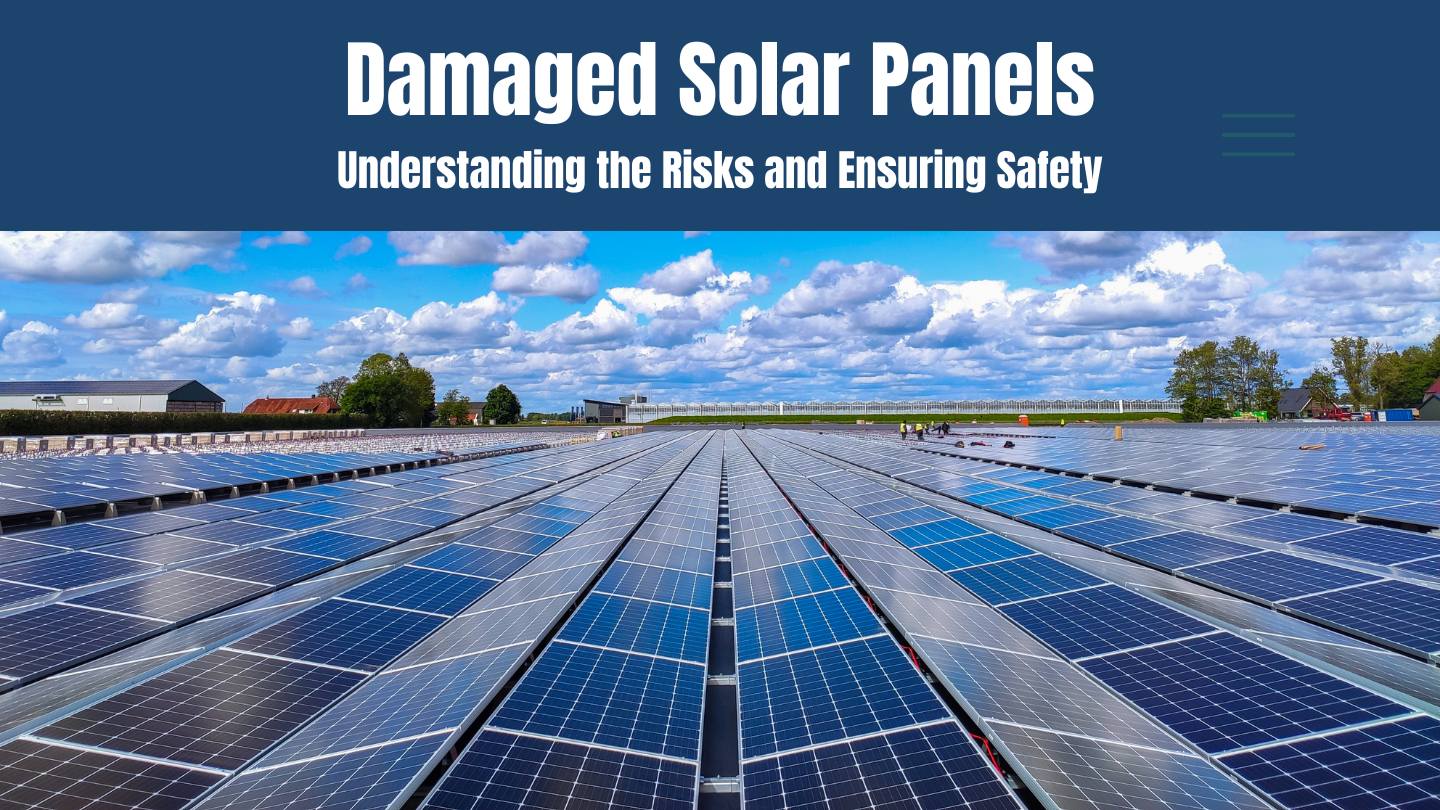Damaged Solar Panels – Understanding the Risks and Ensuring Safety in the Solar Energy Era
The global surge in solar energy adoption, encompassing residential and commercial sectors, brings us closer to a sustainable future. Despite this positive trend, the challenges inherent in manufacturing, transportation, and the ongoing evolution of solar technologies demand our attention, particularly when it comes to damaged solar panels. Ensuring the safety of lives, protecting properties, and safeguarding the longevity of renewable energy investments is paramount.
Understanding Solar Panels:
Before we delve into the risks associated with damaged solar panels, let’s establish crucial facts about these energy-generating marvels:
- Photovoltaic (PV) cells, the foundation of solar panels, harness energy directly from sunlight without the need for chemicals or moving parts.
- Solar panels operate continuously in the presence of light, and their output remains active, unable to be switched off.
- Generating Direct Current (DC), solar panels behave differently from Alternating Current (AC), potentially creating a substantial arc during disconnection or short-circuiting.
- Configured in series and parallel, solar panels result in high DC voltage and current throughout the system.
Risks Associated with Damaged Solar Panels:
This article focuses on visible damages caused by external factors such as hailstorms, fallen trees, vehicle collisions, or structural failures, all of which pose significant risks:
- Arcing Hazards: Damaged panels may initiate arcing, leading to high temperatures that can rapidly escalate into a fire due to the continuous nature of DC arcs.
- Melting and Toxic Materials: High-temperature DC arcs can melt the glass, releasing toxic materials used in solar panels. The resulting droplets may cause further damage to the roof structure and become a real fire hazard.
- Detection Challenges: Damaged panels may go undetected in their early stages. Although inverters often have arc fault detection, it occurs only at the inverter, potentially allowing the spread of fire.
- Electrocution Risks: Exposure to wet conditions can lead to energy jumps onto structures, presenting a risk of electrocution. While proper earthing is essential, certain situations may still pose a risk.
Case Study: The Shopping Mall in South Africa
To highlight the severity of these risks, consider the case of a shopping mall in South Africa. Disturbingly, after photographs were taken and brought to the mall’s management’s attention, no immediate action was taken. The damaged solar panels posed a potential fire hazard, and the lack of awareness regarding DC voltage risks was evident. This real-life example exemplifies the prevalent misconception that DC voltage is harmless and underscores the urgent need for industry-wide education on the risks associated with damaged solar panels.
Solution: Implementing Height Restrictions with Boom Gates
To address such risks in areas prone to vehicle damage, a practical solution involves implementing height restrictions with boom gates at entrances to parking areas where solar carport arrays are installed. This preventative measure serves as a physical barrier, preventing oversized vehicles from entering and causing damage to the solar panels. Much like the boom gates found in underground parking lots, this solution ensures that vehicles exceeding height limits are unable to access spaces where the carport arrays are installed, significantly reducing the likelihood of damage.
Addressing the Risks and Ensuring Safety:
- Education is Key: Both installers and system owners must be educated about potential risks, fostering awareness to prevent dangerous incidents such as fires and electrocutions.
- Regular Inspections: Periodic inspections by qualified professionals are necessary to identify and address any damages promptly.
- Emergency Response Plans: Develop and communicate emergency response plans to mitigate the impact of incidents like fires or floods.
- Height Restrictions and Boom Gates: Implementing height restrictions, such as boom gates in parking spaces, can prevent damages caused by oversized vehicles, ensuring a safer environment for solar installations.
Solar energy’s promise for a sustainable future is substantial, but understanding and managing associated risks are imperative. By recognizing the dynamics of solar panels and proactively addressing visible damages, coupled with innovative solutions like height restrictions with boom gates, we can ensure the safety of individuals and the investments made in renewable energy systems. The shopping mall example serves as a stark reminder of the need for education, awareness, and preventive measures to create a secure and thriving solar energy industry.


Kudos. Lots of facts.